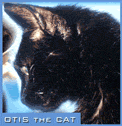Carlton Ward, Jr.—a Florida native, conservationist, and celebrated photographer whose striking photos of the Florida Panther are featured in the April edition of National Geographic—recalls how growing up in Florida first spurred his love of nature and wildlife.  He adds that this love evolved into a deeper, more philosophical and complex affection through college studies in such courses as biology and anthropology. And while he notes that, as a kid, he played around with his Dad’s camera here and there, Ward explains that his true foray into photography unfolded while he was studying abroad in Australia. Later, he observes, more globetrotting—including making seven trips to Gabon, with scientists, under the
He adds that this love evolved into a deeper, more philosophical and complex affection through college studies in such courses as biology and anthropology. And while he notes that, as a kid, he played around with his Dad’s camera here and there, Ward explains that his true foray into photography unfolded while he was studying abroad in Australia. Later, he observes, more globetrotting—including making seven trips to Gabon, with scientists, under the  auspices of the Smithsonian Institution—proved pivotal to his growth as a photographer. And may have helped galvanize his growing inclination toward becoming a conservationist, a role he acknowledges he values more highly than that of photographer, particularly in his advocacy of Florida fauna, protecting habitats, and resisting development that invades or destroys those habitats. Increasingly in recent years, those concerns have intersected at Ward’s passion for—and desire to protect–the Florida Panther. In discussing the new National Geographic piece, written by Douglas Main–which carried the title “Return of the Florida Panther”–
auspices of the Smithsonian Institution—proved pivotal to his growth as a photographer. And may have helped galvanize his growing inclination toward becoming a conservationist, a role he acknowledges he values more highly than that of photographer, particularly in his advocacy of Florida fauna, protecting habitats, and resisting development that invades or destroys those habitats. Increasingly in recent years, those concerns have intersected at Ward’s passion for—and desire to protect–the Florida Panther. In discussing the new National Geographic piece, written by Douglas Main–which carried the title “Return of the Florida Panther”– despite this rosy headline, and the reported rebound in the cats’ population (Ward reminds us that there were about 20 Panthers in the 1970s, and there’s now thought to be 200), he agrees that the article ultimately constitutes a cautionary tale. Ward briefly describes a few techniques he employed in capturing some of the story’s images—including the shot featuring four Panthers—revealing he spent anywhere from two to five years making those pictures. There was more to the conversation, including Ward responding to an array of listener calls and emails. [Photo credits–Florida Panthers: Carlton Ward., Jr/National Geographic…Ward: Malia Byrus] (https://www.carltonward.com, https://www.facebook.com/CarltonWard/, https://www.instagram.com/carltonward/, https://www.nationalgeographic.com/magazine/issue/april-2021)
despite this rosy headline, and the reported rebound in the cats’ population (Ward reminds us that there were about 20 Panthers in the 1970s, and there’s now thought to be 200), he agrees that the article ultimately constitutes a cautionary tale. Ward briefly describes a few techniques he employed in capturing some of the story’s images—including the shot featuring four Panthers—revealing he spent anywhere from two to five years making those pictures. There was more to the conversation, including Ward responding to an array of listener calls and emails. [Photo credits–Florida Panthers: Carlton Ward., Jr/National Geographic…Ward: Malia Byrus] (https://www.carltonward.com, https://www.facebook.com/CarltonWard/, https://www.instagram.com/carltonward/, https://www.nationalgeographic.com/magazine/issue/april-2021)
ALSO: I spoke briefly with Dr. Bryan Franks, assistant professor of biology & marine science at  Jacksonville University, and member of the science advisory committee at Ocearch, an organization devoted to assisting scientists collect data in the ocean, including tagging and tracking great white sharks. I asked Franks to address a particular shark, Edithe, who had made headlines recently in the Tampa area by turning up in waters there, given that Ocearch had first tagged her in (in October) in Nova Scotia, representing a trek of some 3000 miles. Franks explained some of what Edithe’s journey—extensive, but not unprecedented, he said—tells us, and the implications in terms of feeding and other behaviors, predicting that it won’t be long before she starts heading back, arriving in the Nova Scotia area by September or October. [Photo of Edithe: Ocearch] (https://www.ocearch.org)
Jacksonville University, and member of the science advisory committee at Ocearch, an organization devoted to assisting scientists collect data in the ocean, including tagging and tracking great white sharks. I asked Franks to address a particular shark, Edithe, who had made headlines recently in the Tampa area by turning up in waters there, given that Ocearch had first tagged her in (in October) in Nova Scotia, representing a trek of some 3000 miles. Franks explained some of what Edithe’s journey—extensive, but not unprecedented, he said—tells us, and the implications in terms of feeding and other behaviors, predicting that it won’t be long before she starts heading back, arriving in the Nova Scotia area by September or October. [Photo of Edithe: Ocearch] (https://www.ocearch.org)
COMEDY CORNER: Mark Forward’s “Don’t Feed The Wildlife” (portion) (https://www.markforward.com)
MUSIC: Rebekah Pulley’s “Talking Animals Theme,” instrumentals
NAME THAT ANIMAL TUNE: We didn’t play “Name That Animal Tune” today.
AUDIO ARCHIVE:
Listen Online Now:



